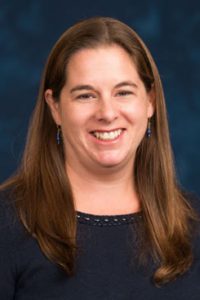
Statewide effort to study how environment affects cancer risk
The University Record 4/5/24
As part of a $13 million grant from the National Cancer Institute, they want to recruit at least 100,000 Michiganders ages 18-49 from diverse racial and ethnic backgrounds for the Michigan Cancer and Research on the Environment Study, or MI-CARES.
The effort includes those who live in environmental injustice hotspots such as metro Detroit, Flint, Grand Rapids, Kalamazoo, Lansing and Saginaw.
“MI-CARES will allow us to see environment exposure distributions across communities in Michigan and help us understand differences based on social determinants of health, including neighborhood characteristics,” said C. Leigh Pearce, professor of epidemiology at the School of Public Health and co-lead of Rogel’s cancer control and population sciences program.
“We also will look at the impact of environmental exposures on immune function and biologic aging. Are these exposures causing our cells to age prematurely, which could lead to cancer or other diseases?”
Pearce is the co-principal investigator of MI-CARES, along with fellow Rogel and Michigan Public Health researchers Dana Dolinoy, NSF International Chair of Environmental Health Sciences, and professor of environmental health sciences and of nutritional sciences; and Bhramar Mukherjee, chair and John D. Kalbfleisch Distinguished University Professor of Biostatistics, Siobán D. Harlow Collegiate Professor of Public Health, professor of epidemiology and of global public health, and assistant vice president for research – research data services.
Michigan has a history of environmental catastrophes over the decades, from a statewide environmental exposure in the early 1970s involving contamination of animal feed with fire retardant, to the Flint water crisis, to the recent PFAS and hexavalent chromium releases into the Huron River. In addition, the Tri-Cities area of Midland, Saginaw and Bay City, as well as the River Rouge communities in metro Detroit, have some of the highest pollution levels in the country.
“We’re evaluating environmental exposures and different intermediate health outcomes with the idea to protect individuals from cancer,” Dolinoy said. “Because environmental exposures may affect other things, we will also be able to evaluate heart disease, diabetes and other disease endpoints to identify which of the thousands of chemicals that we’re exposed to can impact our health.”
The team has identified six environmental injustice hotspots, with plans to recruit equal numbers of Black, Hispanic, Middle Eastern and North African, and white participants.
“When you look broadly at exposures, communities of color are largely affected. It is important to try to understand disparities in exposures, including across neighborhoods,” Pearce said.
When people in enroll in MI-CARES, they complete an online questionnaire and may be asked to provide blood or saliva samples. The entire process is done remotely. Participants will then be asked to complete additional surveys every year.
“We can get a lot of information about exposures through people’s address by using geographic information systems. That allows us to understand what air pollution or other types of social stressors might be present in that immediate environment,” Dolinoy said.
“We also will be collecting biological samples that individuals can collect themselves and mail back to us, and by doing that, we can evaluate two things. We can evaluate direct exposure to chemicals like PFAS and lead. And we also can get access to an individual’s epigenome to begin to identify biomarkers that may be predictive of future risk or perhaps predictive of future health. By doing this in a population level, participants will be contributing to future health of the state of Michigan and beyond.”
By following participants throughout the year, the researchers will be able to look across the lifespan at critical time periods: birth, school age, puberty, young adulthood, pregnancy and menopause. This life-course approach is one of the study’s key design points.
And once they reach the threshold of 100,000 or more participants, there will be opportunities to establish smaller cohorts of cancer patients or survivors to look at environmental exposures, survival and quality of life outcomes. The cohort will also be a resource for researchers beyond cancer, such as cardiovascular disease, diabetes and Alzheimer’s.
“What we learn will help us understand the association between environmental exposures and intermediate cancer markers, such as stress, inflammation and immune function. Eventually, we’ll also be able to look at cancer incidence,” Pearce said.
“At the end of the day, what we hope to show is how Michigan as a statewide community can come together and really get answers by participating in this cohort.”

